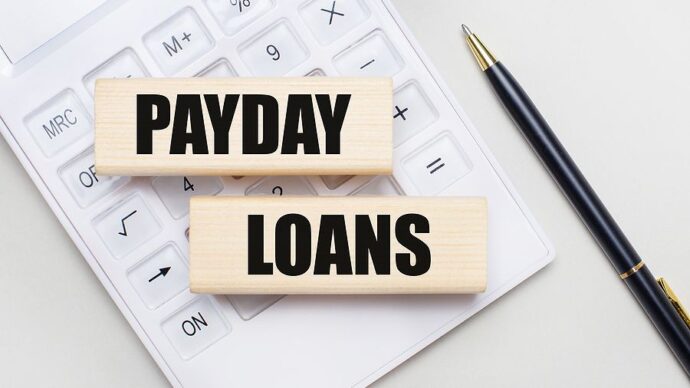In a world of financial uncertainties, emergencies can strike when you least expect them. Your car breaks down, a medical bill arrives, or an unexpected home repair arises. In such desperate times, payday loans may seem like a lifeline. However, they come with a paradoxical allure, as the quick cash they provide can lead to a cycle of debt that’s challenging to break. In this blog post, we’ll delve deep into the payday loan industry, exploring what these advances are, why they’re so tempting, the hidden costs, and the potential consequences. We’ll also discuss alternatives, regulatory measures, and responsible borrowing practices.
What Are Payday Loans?
Payday loans are short-term, small-dollar loans typically designed to help borrowers cover unexpected expenses until their next paycheck. These advances are usually for amounts ranging from $100 to $1,000 and are typically due within two to four weeks. To secure a payday loan, borrowers provide a post-dated check or authorize an electronic withdrawal from their bank account for the loan amount plus fees.
Quick Cash: The Temptation of Payday Loans
The allure of a payday advance lies in its speed and accessibility. Traditional banks often have lengthy application processes, credit checks, and stringent eligibility criteria. In contrast, payday lenders require minimal documentation and offer almost instant approval. This quick access to cash can be a lifesaver when faced with an urgent financial need.
The Allure of Easy Approval

One of the primary reasons payday loans are so tempting is their easy approval process. Many lenders do not perform traditional credit checks, making them accessible to individuals with poor or no credit history. This low barrier to entry can be particularly appealing to those who have been denied advances from traditional financial institutions. This accessibility offers a sense of inclusivity to borrowers who might otherwise feel excluded from the financial system, providing them with a temporary solution to pressing financial needs without the hurdles of credit checks.
Hidden Costs and High Interest Rates
While payday loans may provide immediate relief, they come with substantial costs. Payday lenders typically charge fees that equate to extremely high annual percentage rates (APRs), often exceeding 300%. For example, a $15 fee for a two-week $100 loan equates to an APR of 391%. These high costs can trap borrowers in a cycle of debt, as they struggle to repay the loan and its associated fees. The staggering APRs can catch borrowers off guard, turning what seemed like a manageable short-term solution into a long-term financial burden, making it crucial to read the fine print and understand the real cost of these advances.
The Debt Trap: A Common Pitfall
The most significant pitfall of payday loans is the debt cycle they can create. Borrowers who cannot repay the loan in full by the due date often roll it over, paying additional fees and extending the loan. This cycle can continue indefinitely, leading to a cycle of debt that becomes increasingly difficult to escape. The debt trap can quickly turn a small, short-term advance into a long-lasting financial nightmare, where borrowers find themselves juggling multiple payday advances, each with its own set of fees and due dates.
Alternatives to Payday Loans

Understanding the risks associated with payday loans, it’s crucial to explore alternative options. These may include negotiating payment plans with creditors, seeking assistance from nonprofit organizations, or exploring low-interest personal loans from credit unions. Exploring these alternatives not only provides financial relief but also helps individuals build healthier financial habits, breaking the cycle of dependency on these loans.
Regulatory Measures in Place
Recognizing the potential harm posed by payday loans, many states and countries have implemented regulations to protect consumers. These regulations often limit the maximum loan amount, cap interest rates, and require lenders to provide transparent information about credit terms and fees. Regulatory measures aim to level the playing field between borrowers and lenders, ensuring that borrowers are aware of the costs involved and have a fair chance to repay their loans without falling into a debt spiral.
Understanding the Cycle of Borrowing
Breaking the payday loan cycle requires a clear understanding of your financial situation. Create a budget, track your expenses, and explore options for increasing your income or reducing your spending. Seeking advice from financial counselors or debt relief agencies can also be beneficial. Understanding the underlying causes of financial distress and addressing them can be a powerful tool in preventing future reliance on payday credits.
Impact on Credit Scores
While payday loans may not directly affect your credit score if paid on time, they can have long-term consequences. Late or missed payments can lead to collection actions, damaging your credit. Moreover, the cycle of borrowing and rolling over loans can lead to a perpetual state of financial instability, which can negatively impact your creditworthiness. It’s essential to recognize that the consequences of payday credits go beyond the immediate financial burden and can affect your financial standing for years to come.
Breaking the Payday Loan Cycle

Escaping the payday loan cycle requires discipline and a well-thought-out plan. Start by paying off your existing payday loans as soon as possible. Explore debt consolidation options to combine multiple credits into one with a lower interest rate. It’s crucial to break the cycle of borrowing and create a sustainable financial plan. Breaking free from the payday loan cycle is not just about paying off the debt; it’s about fundamentally changing your financial habits and building a more stable financial future.
Responsible Borrowing Practices
If you must resort to payday loans, do so responsibly. Only borrow what you can realistically repay on your next paycheck. Avoid rolling over loans or taking out multiple payday loans simultaneously. Prioritize paying off payday credits to avoid the ballooning costs associated with extended borrowing. Responsible borrowing practices involve careful assessment of your financial situation, planning for repayment, and actively working to improve your overall financial well-being. Remember, responsible borrowing is a stepping stone toward financial stability, while reckless borrowing can lead to long-term financial struggles.
Conclusion: Weighing the Pros and Cons
In the payday loan paradox, the allure of quick cash is undeniable, but the potential consequences are severe. While these loans can provide immediate relief, their high costs and the cycle of debt they create can lead to financial ruin. It’s crucial to weigh the pros and cons carefully and explore alternative options before considering a payday loan.















